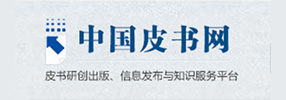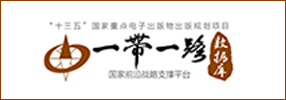
社会科学文献出版社 2013-09出版
中国水风险评估报告(2013)
0人在看

先晓推荐
如何有效应对水危机、妥善处理水与发展的关系?这是摆在中国各级政府和社会各界面前的一大难题。为了献计献策,自2012年起,世界自然基金会北京代表处(WWF)组织中国水利水电科学院水资源研究所、国务院发展研究中心社会发展研究部的研究人员成立了课题组,共同承担了WWF水风险评估工具在中国应用的研究工作。本书就是这个研究工作的成果。
蓝皮书由政策报告、技术报告、特别关注三个部分组成。政策报告是技术报告的成果提炼、政策解读和该领域的相关热点回答,技术报告是完整的WWF水风险评估工具介绍、本土化改造说明和对中国主要流域定量评估的过程及结果。特别关注有两个部分,分别是对中国水风险评估结果的解读和WWF水风险评估工具的“说明书”。
因此,这本蓝皮书立足国情和水情,结合对国家“十二五”规划的目标和目前突出水问题的考虑,以“用WWF水风险工具识别中国水风险,帮助中国守住三条水红线”为蓝皮书年度主题和全书线索,全景展现了WWF水风险评估工具对中国水情的评估结果及其政策应用情况,希望对中国政府相关部门、企事业单位等对水资源的可持续利用提供帮助和参考。
相关海报
详情
内容介绍
参考文献
图书详情
ISBN:978-7-5097-4932-6总页码:236
字数: 237千字装帧:平装
内容简介
本书由政策报告、技术报告、特别关注三个部分组成,立足国情和水情,结合对国家“十二五”规划的目标和目前突出水问题的考虑,以“用WWF水风险工具识别中国水风险,帮助中国守住三条水红线”为主题,全景展现了WWF水风险评估工具对中国水情的评估结果及其政策应用情况,希望对中国政府相关部门、企事业单位等对水资源的可持续利用提供帮助和参考。
展开
图书摘要
2011年,中央一号文件首度关注水利,提出“水是生命之源、生产之要、生态之基”并初步构建了“最严格水资源管理制度”,2012年国务院3号文件将其细化为用水总量、用水效率、水功能区达标率“三条水红线”管理指标,使“水红线”成为各行各业发展的约束性指标。将水利事业提升到这样的地位,是因为中国的水危机已经普现,且这种水危机很可能带来全局的发展危机。
如何有效应对水危机,妥善处理水与发展的关系?这是摆在中国各级政府和社会各界面前的一大难题。为了献计献策,自2012年起,世界自然基金会北京代表处组织中国水利水电科学研究院水资源研究所和国务院发展研究中心社会发展研究部的研究人员成立了课题组,共同承担WWF水风险评估工具在中国应用的研究工作。这个工作的成果,就是《水与发展蓝皮书》的第一本《中国水风险评估报告(2013)》。本书立足国情和水情,结合对《国民经济和社会发展第十二个五年规划纲要》中的规划目标和目前突出的水问题的考虑,以“用WWF水风险工具识别中国水风险,帮助中国守住三条水红线”作为本书年度主题和全书线索,全景展现了WWF水风险评估工具对中国水情的评估结果及其政策应用情况。
本书由政策报告、技术报告、特别关注三个部分组成。政策报告是技术报告的成果提炼、政策解读和该领域相关热点问题的回答,技术报告是完整的WWF水风险评估工具介绍、本土化改造说明和对中国主要流域定量评估过程及结果的说明。在评估中,既有以前各界所不了解的中国水情、水情和国情关系的定量分析,也有不少与大家感觉不符但更合理的结论,如中国的整体水风险并不高但不能“放任自流”,农业面源污染、城市生活污染在中国的污染物排放总量中占有相当比例,但其对水风险的贡献却不大,等等。为了使读者能正确理解水风险评估结果,本书通过特别关注对水风险评估过程和结果进行针对性解读。
政策报告首先从总体上分析了产业增长、资源约束与科学发展之间的关联,从水量、水质方面说明水风险是影响经济和社会发展的重要风险,并分析水风险防控的难题;其次说明“中国水风险情况如何”和“水风险从哪些工业行业来”,从水风险相对状况、水风险来源两方面解读WWF水风险评估工具对中国水风险的首次评估结果;最后进行政策解读,从水风险角度提出了以科学的水发展推动科学发展的跨行业政策建议,明晰守住“三条水红线”难点在哪里,了解政府如何作为,企业如何应对。
技术报告首先详细说明WWF水风险评估工具指标体系、中国本土化改造的主要内容,并将其应用于中国10个水资源一级区和长江区7个水资源二级区,系统给出了其水风险状况;然后从自然因素、人为活动、水资源管理三方面剖析了水风险的成因,并进一步剖析水风险与国家的上位政策、工业行业发展的关系,并逐流域进行了水风险的工业行业来源解析。
中国各区域水风险状况如下:在全国“两横三纵”城市化战略格局中,有10个区处于水风险的中风险区,11个处于低风险区,其中,有48%的地区处于3~4级物理风险区,有52%的地区处于2级物理风险区。从全国农业化战略格局看,除黄淮海平原、汾渭平原、河套灌区和东北平原主产区处于水风险的中风险区外,其他3个主产区处于低风险区。在国家生态安全战略格局中,25个国家重点生态功能区,6个处于水风险的中风险区,如黄土高原丘陵沟壑水土保持生态功能区、科尔沁草原生态功能区等,其他都处于低风险区。这其中,从物理风险状况来看,有6个处于3级物理风险区,占总数的24%,其余的19个生态功能区处于2级物理风险区。在国家禁止开发区域中,40%处于水风险的中风险区,60%处于低风险区。这其中,8%的国家禁止开发区域处于物理风险4级区,32%的处于物理风险3级区,60%处于物理风险2级区。水风险成因主要有地形地貌、气候状况等不可抗拒的自然因素,经济社会发展导致的水资源开发利用程度增加、污染物排放增加等人为因素,以及缺乏对水资源有效保护及管理等。本书通过水风险源解析给出了各流域水风险的具体的工业行业来源。最后,针对以上原因,本书对不同领域给出了不同的工作重点。
特别关注有两个部分,分别是对中国水风险评估结果的解读和WWF水风险评估工具的“说明书”。特别关注一“为什么中国的水风险评估值偏低”,从水质、水量、水生态等方面将中国水风险进行国际比较和国内局部比较,具体解释为什么中国水风险评估值感觉偏低,并以最重要的长江流域为例说明水风险角度的“水与发展关系”,即:从水风险变化及其动因中不仅可以看出长江流域生物多样性面临的巨大威胁,还可以看出这些水风险在相当程度上是可控的,目前长江流域的水风险实际上源自长江流域的水与发展关系不合理的状况,长江流域各省“高资源消耗、大规模扩张、全方位污染”的“高大全”经济增长方式亟待转型。针对当前水生生物多样性面临的严峻局面,WWF在长江流域开展的江豚保护项目,将长江流域的旗舰物种江豚列为监测和保护对象,不仅可以较直观地反映流域水生态的风险状况,更可作为长江流域发展方式的表征——江豚数量的变化既反映了长江流域水风险的变化,也反映了长江流域经济增长方式的变化。特别关注二“评估结果是如何计算出来的”,专门分析了WWF水风险评估工具的合理性与可行性,认为这个水风险评估工具涵盖的指标较为全面,采用了国际上公认的指标,计算过程具有严密的逻辑性,结果能够客观主观兼具地反映较大尺度上不同区域的水风险现状。
The 2011 “Central First Document”first focused on
water resource management,pointed out that “water is the source of life, key
point of production, and basis of ecology” and preliminarily constructed “the
most stringent management system for water resource”. The third document of the
State Council in 2012 decomposed it into the “Three Water Red Lines” management
indexes of total water use, water efficiency and the rate of water quality
reaching standard in water functional zones, and made “Three Water Red Lines”
become the binding targets for the development of various industries. The
reason why water resource management is now receiving so much attention is that
water risks in China are widespread and
might bring overall risks for development.
How to deal with water risks and development is a
big problem for all levels of government and different social sectors. Since
2012, WWF-Beijing Office formed a research group with China
Institute of Water Resources and Hydropower Research (IWHR) and Department of
Social Development of Development Research Center(DRC) of the State Council to study
application of WWF Water Risk Assessment Tools in China. Achievement of this
study is China Water Risk Assessment Report, which is the first of Water and
Development Blue Books. According to water condition in China, this Blue Book
combined with targets of Economic and Social Development Plan (2011-2015) (PLAN for short) and water questions for now, took assessing China Water Risks with
WWF Water Risk Assessment Tools and helping China defend the RED LINES for
water resource as the subject and the thread of the book, aiming to
panoramically exhibited water risk assessment results and policy application in
China.
This book is composed of Policy Report, Technology
Report and Special Focuses. Policy Report provides a summary of Technology
Report, policy interpretations and answers to hot spots. Technology Report
provides complete introduction of WWF Water Risk Assessment tools, local
adjustments, assessment processes and results of main watersheds in China. The
results include China water conditions and quantitative analysis of them which
social sectors did not know before, and some conclusions which seem not to
match people’s expectations but more reasonable, such as that
China’s general water risks are not high but should be
reduced, and that agricultural non-point source pollution and urban domestic
pollution account for a considerable proportion in China’s
total pollutant discharge but contribute little toward its water risks. Special
Focuses provide targeted interpretations of assessment processes and results to
help readers properly understand the results.
Chapter 1,Policy Report, generally analyzed the
relationship between industrial boom, resource constraints and scientific
development, explained water risks are key risks for economic and social
development from aspects of water quantity and quality, and analyzed
difficulties of prevention and control of water risks. Chapter 2 interpreted
the first assessment results from aspect of relative water risks and risk
sources to explain the conditions of China water risks and the industrial
sources of water risks. Chapter 3 provided multi-industrial
policies promoting scientific development with reasonable water development
using water risks, and pointed out how to defend “Three Water Red Lines” for government and
enterprises.
The former three chapters introduced the index
system of WWF water risk assessment tools and local adjustments, estimated the
water risks of 10 regions and 7 sub-regions of Yangtze River Basin. Chapter 4
interpreted sources from natural factors, human activities and water resource
management, explained the relationship between water risks and policies and
industrial development, and estimated industrial sources of water risks in
every drainage basin.
Water risk condition of every region in China is
as below. The risks of 10 regions are rated as medium and the remaining 11
regions are low, the physical risks of 48% regions are 3rd or 4th grade, and
that of the rest are 2nd, classed by “3 latitudinal lines and 2 longitudinal
lines”, the strategic structure of
urbanization. The risks of the Huanghuaihai Plain, Fenwei Plain, Hetao-irrigated
Region and Dongbei Plain are medium and for the remaining 3 regions they are
low classed by national strategic structure of agriculture. The risks of loess
plateau and Horqin Grassland are medium and for the remaining 19 ecological
function areas the risks are low. The physical risks of6 regions (24%) are 3rd
grade and that of the other are 2nd, 8% of China’s
Prohibited Development Regions are at the 4th grade risk, 32% are 3rd, 60% are
2nd. Irresistible natural factors such as topographic and geomorphic conditions
and climate condition, human activities such as increasing degree of water
resource development and more pollution discharge, and lack of effective
protection and control of water resource are the sources of water risks. This
book provided different key industries of every drainage basin depending on the
industrial sources of risks for every basin.
Two parts of Special Focus interpreted the results
and introduction of WWF Water Risk Assessment tools in China. Special Focus 1
compared China’s water risks with international and local regions
on the points of water quantity, water quality and water ecology to explain why
China’s water risks are below, and took Yangtze River
basin as an example to interpret water risks and development. Yangtze River
faces a big problem about biodiversity, but the problem is controllable. The
unreasonable relationship between water and development leads to water risks in
Yangtze River.Development based on “High resource consumption, massive
expansions and pervasive pollution” should change.The finless porpoise
conservation program launched by WWF can show the change in water risks of
Yangtze River and development style. Special Focus 2 analyzed the rationality
and feasibility of WWF tools and indicated that tools have over all index
system using international index and logically estimating risks so that WWF
tools can objectively and subjectively indicate water risks conditions in
different regions on a large scale.
展开
内容资源
目录
卷册
附属资源
图片
图表
音频
视频
前言 达成科学的水与发展关系首先需要把握水风险/001
Ⅰ 政策报告
1 第一章 经济增长、资源约束与科学发展/001
2 第二章 水风险评估结果的政策解读/017
3 第三章 建立科学的水风险管理机制促进科学发展/033
Ⅱ 技术报告
4 第一章 WWF国际水风险评估工具的构成和使用方法/040
5 第二章 WWF水风险评估工具的中国本土化调整/053
6 第三章 中国的流域水风险状况/071
7 第四章 水风险成因和工业行业来源解析/128
8 附 件 企业水风险的调查问卷/152
Ⅲ 特别关注
9 特别关注一:为什么中国的水风险评估值偏低?/160
10 特别关注二:评估结果是如何计算出来的?/181
卷册系列共0个资源
包含0篇文章
包含0张图片
包含0张图表
手机扫码阅读
相关知识库
请选择图书

0:00
- 1.0
- 1.5
- 2.0
- 3.0






